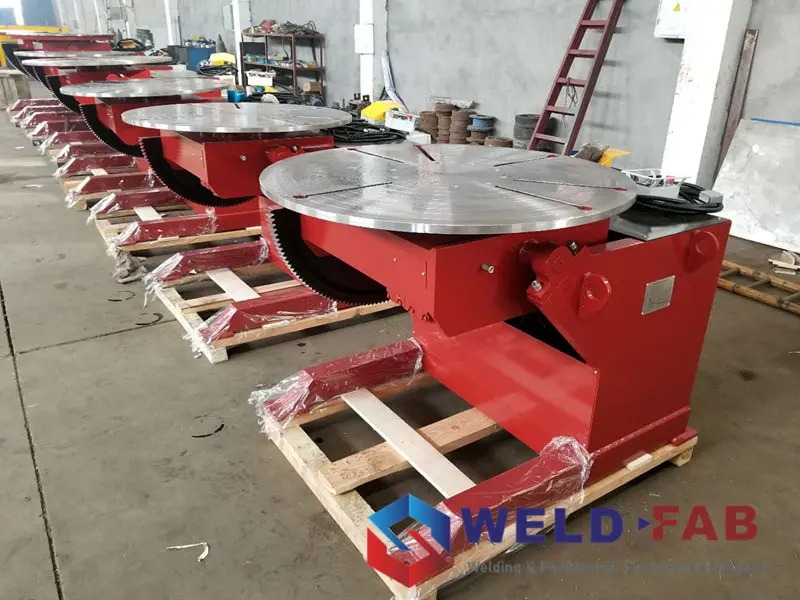
Rotary Welding Positioner
WELD-FAB supply all kinds of rotary welding positioners, includes head tail stock welding positioner, L-type welding positioner, hydraulic welding positioner, manual elevating welding positioner, fixed welding positioner and etc. To learn more about welding positioners, please contact with our sales team.
* Loading capacity from 100kgs to 50,000kgs
* Power supply customized from 110V to 600V
* Rotation speed and tilting angle can be customized
* Control mode can choose VFD or PLC
* Mechanical structure can be design for Elevating, Head Tail stock or Hydraulic type
Weld-Fab Rotary Welding Positioners
Head Tail stock welding positioner
L-Type Welding Positioner
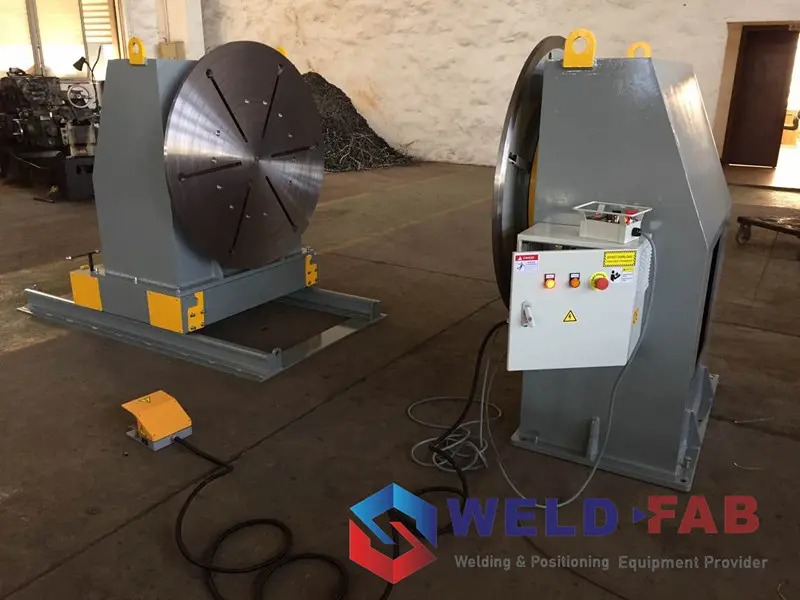
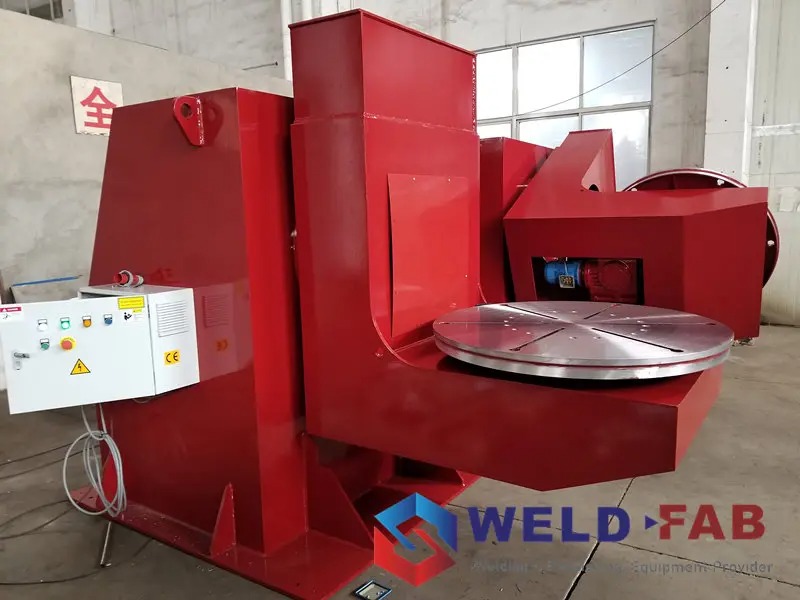
Hydraulic Positioner
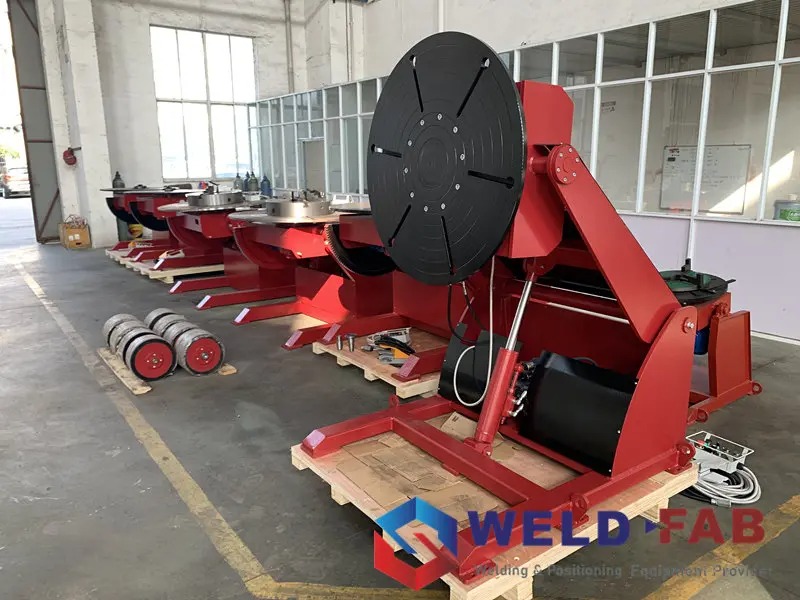
Manual Welding Positioner
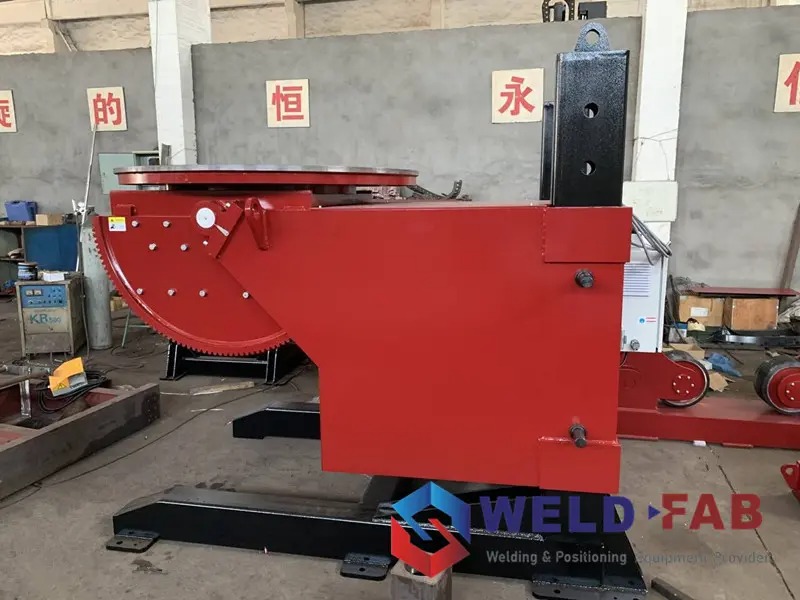
Weld-Fab Welding Positioner Video
Why Choose Weld-Fab Positioner?
√ Standard match with CSA & CUL and CE
√ Stable mechanical structure
√ Safety electrical design
√ Special customized loading capacity and dimension
√ Superior warranty and after service
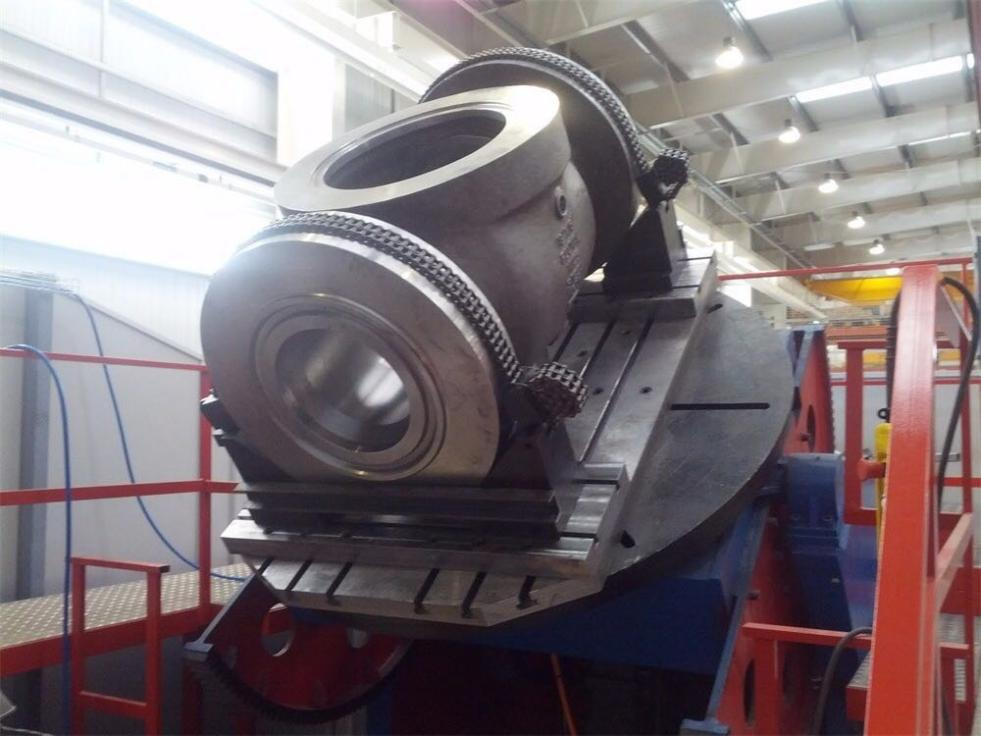 Frequently Asked Questions about Rotary Welding Positioner
Frequently Asked Questions about Rotary Welding Positioner
Rotary welding positioner rotates the weld pool to achieve a desired profile or shape on the workpiece. The rotational axis of rotary welding is typically vertical and it can be either continuous or intermittent depending on the application. This article will answer some frequently asked questions about rotary welding positioners: what they are, how they work, and what sets them apart from other rotary positions.
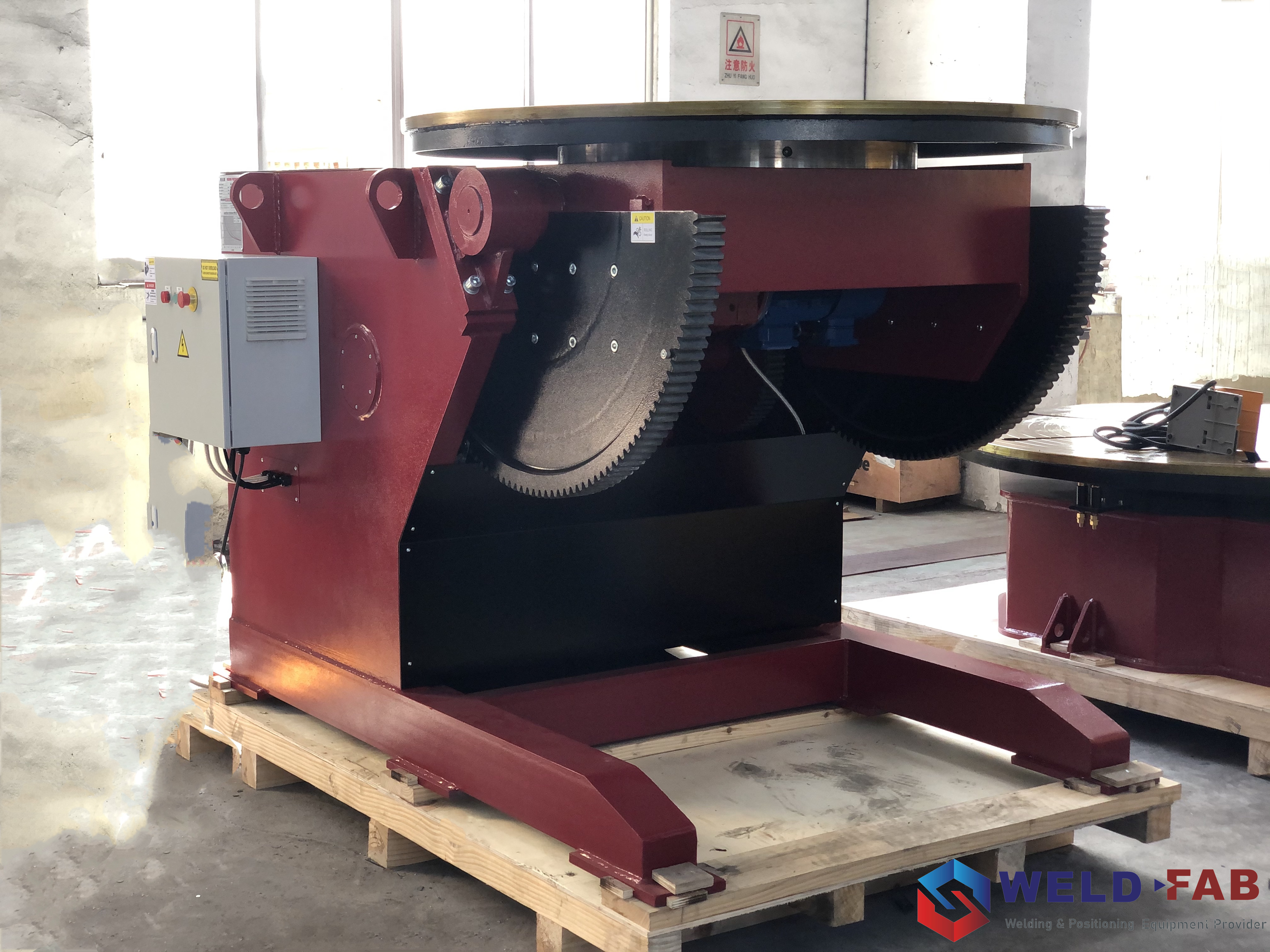
What rotary welding positioners are?
A rotary welding positioner can be a device that is very helpful for a factory or company. It helps when they weld something. The positioner holds the piece in a chuck and then rotates it in a plane perpendicular to the floor.
How rotory welding positioner work?
Rotary welding positioners are used to weld the seam of two metal plates together to make a T-shape, or a corner joint.
Rotary welding positioners can also be used to produce circular welds on round objects.
What is the difference between rotary welding and other types of welding?
While both stationary and rotary welding use heat to join metals, there are several key distinctions between the two:
Rotary welding uses a rotating weld pool that results in a more consistent weld bead when compared to stationary welding;
Rotary welding produces less distortion than stationary welding because the entire work piece does not have to be moved into place like it does with stationary welding;
Rotary welding also enables the welder to achieve a desired profile or shape on the workpiece.
What rotary positions are there?
Rotaries positions can be either continuous or intermittent depending on what they’re used for and how long they need to remain in place while doing so:
Some rotary positioning systems provide incremental position control, which provides faster response time than other types of rotary positioning technologies such as absolute and indexing rotators;
An example of this type of rotator is ball screws that move incrementally based on controlled motor speeds rather than using intricate gearing mechanisms. Continuous vs Intermittent. Incremental Position Control – Ball Screws do not use intricate gearing mechanisms.
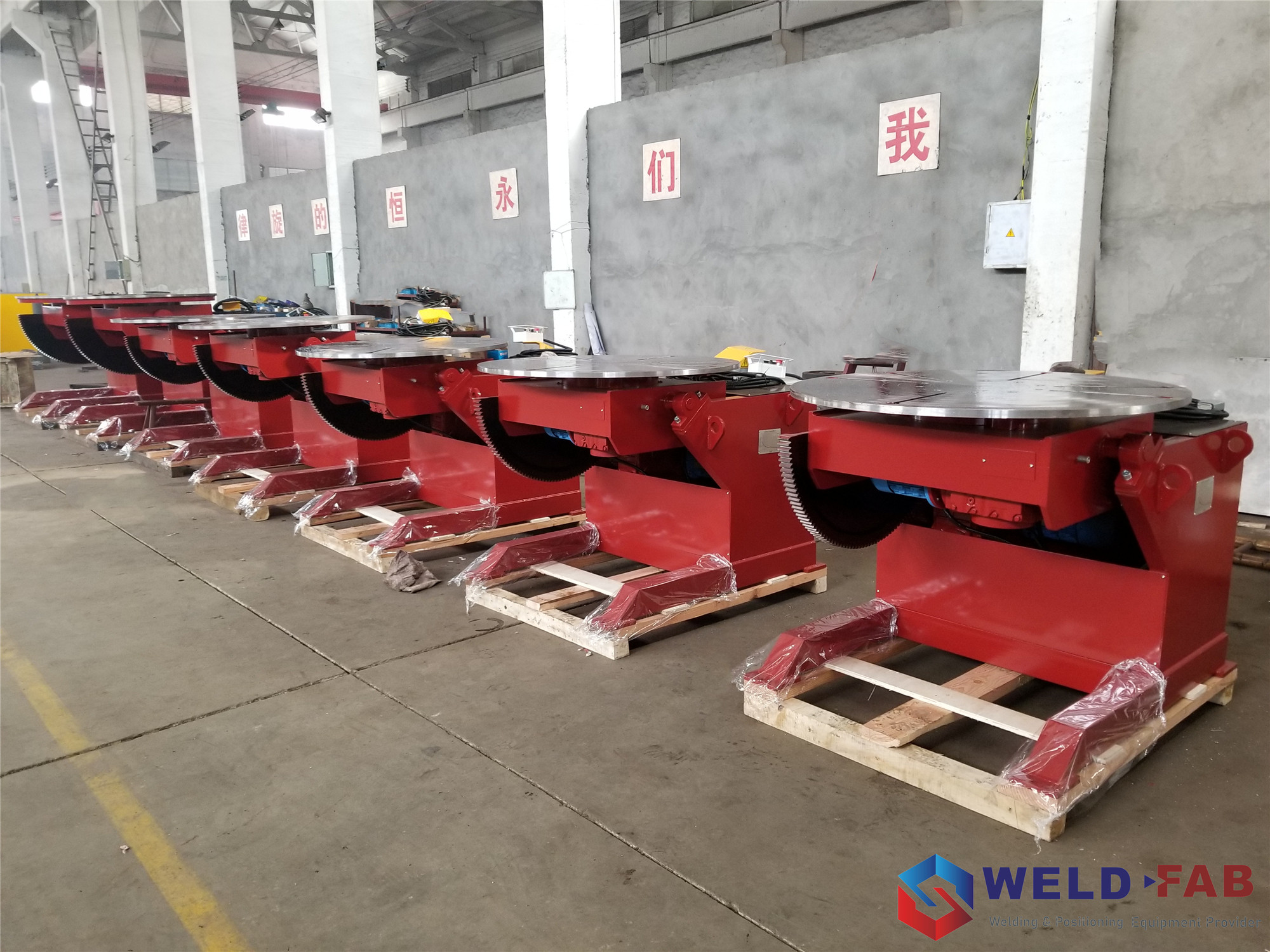
What are the benefits of using rotary welding positioners?
Rotary welding positioners offer a number of advantages over other types of welding, including:
– more consistent weld bead;
– less distortion; and
– ability to achieve desired profile or shape on workpiece. Advantages – More Consistent Weld Bead, Less Distortion, Ability to Achieve Desired Profile or Shape.Continuous vs Intermittent. Incremental Position Control – Ball Screws do not use intricate gearing mechanisms.
What are some applications that rotary welding positioners are used for?
– rotary welding positioners can be used for a variety of applications, including:
- Military and Defense Industry
- Marine and Wildlife Industry
- Oil & Gas Industry
- Petrochemical Industry
- Power & Generation Industry
- Railroad and Transportation Industry
- And Many More
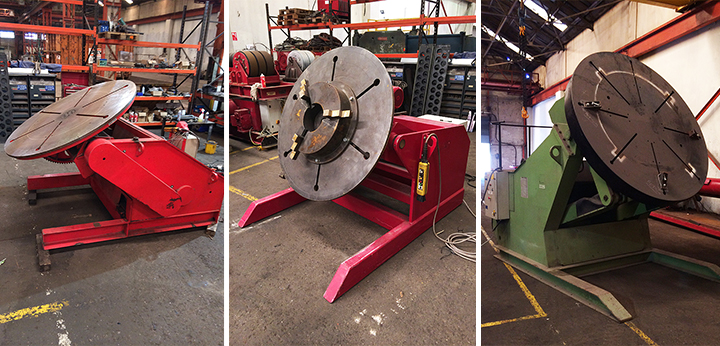 How are rotary welding positioners different from other types of rotary positions?
How are rotary welding positioners different from other types of rotary positions?
– rotary welding positioners are unique in that they offer an adjustable rotational axis that allows for more flexibility when it comes to achieving a desired profile or shape on the workpiece.
– while other types of rotaries positions may have fixed axes, rotary welding positioners are able to rotate around an axis that is horizontal, which allows for rotations in the vertical direction.
How accurate are rotary tables?
The table is accurate to 2 13 arc seconds. The backlash might be about 10 arc seconds. Both lines show a similar long-range error that is caused by the geometric errors of the worm wheel and possibly by an eccentric mounting of the wheel.
What is weld positioner?
A welding positioner is a machine that holds work pieces and rotates them so that welders can work at an angle.
Where Can You Get High Quality Rotary Welding Positioners?
Here at Weldfab, we have been providing high-quality and effective rotary weld positioners for over 15 years. We offer customizability with our wide range of options such as motors types mechanism colors etc.; Choose what suits you best!
Don’t hesitate to contact us if require any help on this matter because all your requirements will be met by the team here.
